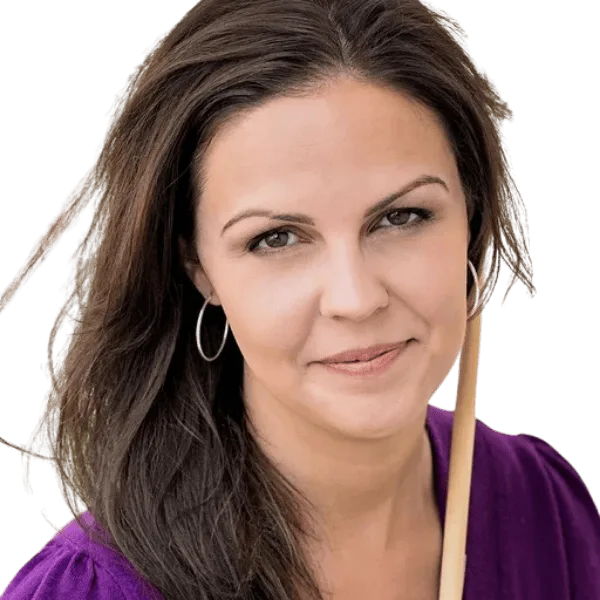Changing banks isn’t always easy, as our bank accounts are often tightly woven into our everyday lives. Whether you’re moving to a new city, looking for better rates on savings or more perks with your checking account, we’ve got a step-by-step breakdown of how to switch banks.
Step 1: Find a new bank
If you haven’t chosen a new bank, the first step is to find the best one for you. You have various options to consider, including traditional banks, credit unions and online banks — all of which typically provide standard deposit accounts like checking and savings.
When looking for a bank, consider whether you want a nearby branch, a large network of ATMs or stronger perks, such as higher yields and lower rates.
If you’re on the prowl for a savings account, compare the account’s annual percentage yield (APY). Most traditional banks offer rates as low as 0.01% APY, which is lower than the 0.40% national average, according to the FDIC. Since online banks have fewer operational expenses, they can pass savings onto their customers in the form of low fees and strong yields as high as 5% APY.
The best checking accounts offer interest, cashback rewards and free checks and have no monthly or overdraft fees.
Step 2: Open the account
Most banks allow you to open an account online, making the switch easier. But some banks, like Chase, require certain accounts to be opened in person. For example, they might allow you to open a single account online, but joint bank accounts must be applied for in person.
Most institutions have similar document requirements, typically asking for:
- Government-issued ID, such as a passport or driver’s license
- Social Security number or Individual Taxpayer Identification number
- Proof of your physical address, such as a utility bill
- Opening deposit (if required)
Step 3: Switch everything over
After you’ve opened your account, you can fund it, activate your debit card and switch over your direct deposit and bill pay.
If this will be your everyday bank account, here’s a quick list of things to move over:
- Transfer funds from your old account to the new one
- Redirect recurring transfers, such as savings transfers or deposits sent to retirement accounts
- Redirect your direct deposits from your employer
- Update automatic bill and subscription payments
- Add your new account to your mobile wallet
Most banks make transferring funds a simple process. To switch things over, you’ll need the routing and account number of your new bank account.
Step 4: Close your old account
Once you’ve moved all your money into the new account, you can close your old account. You may want to do this quickly, as many accounts require a minimum balance or direct deposits to avoid fees. But before closing it, make sure your direct deposits have started to go into your new account.
To close an account, you have a few options: in-person, over the phone or online. After you’ve closed the old account, you can get rid of your old paper checks and debit and ATM cards.
Be sure to get verification that the account was officially closed. If you missed transferring over an automatic bill payment or loan payment to your new account, you’ll want proof that you closed the old account in case the bank tries to make the transaction go through and ding you with overdraft fees for an account that no longer exists.
You may also face account closure fees, but they’re not very common. These fees are often only applicable if you close an account that was recently opened, such as within 30 to 90 days.

"If you have $250,000 or more saved in one bank, consider spreading it across multiple banks. FDIC and NCUA insurance typically only covers up to $250,000, leaving any excess vulnerable in the case of a bank failure. Diversifying your accounts ensures full protection. Having multiple bank accounts is often recommended for added insurance if your savings approach or exceed $250,000."
4 benefits of switching banks
Benefits will vary and depend on why you’re moving banks:
- Nearby branches and ATMs. You could switch banks for one that has more branch locations in your area for in-person support, easier check cashing or more ATM access.
- Sign-up bonuses. While not a good sole reason to switch banks, many offer referral or sign-up bonuses for setting up a new account and fulfilling requirements, like setting up direct deposits.
- Better perks. Many traditional banks have low APYs, but switching lets you compare banks with much higher APYs, allowing your savings to grow faster passively.
- Modern features. Not all banks and credit unions have every bell and whistle you want. It might be worth the switch if your bank or credit union isn’t compatible with Zelle or mobile wallets like Apple Pay or Google Pay.
Will switching banks hurt my credit score?
Switching banks won’t impact your credit score. Your bank history isn’t reported to the credit bureaus, and banks don’t check your credit score when you apply for a deposit account.
One of the only circumstances where switching banks could harm your credit score is if you close an account tied to a line of credit or loan and don’t resolve owed balances. If you don’t sort it out, the bank may send the account to collections or report late payments to the credit bureaus.
Why switch?
The main reason people look to switch savings accounts is to find a bank offering a higher APY (49%), while about a third (29%) just want to keep their savings and checking in one place.
Bottom line
Although transferring your bill pay and switching your direct deposits, autopay and subscription services to a new bank can be a hassle, it can have many benefits. Changing banks can mean lower fees, more ATMs and branches and earning a higher rate on your savings balance. Before switching, compare the best banks and credit unions to find one that meets your financial needs.
Sources
Ask a question
More guides on Finder
-
Savings Accounts with ATM and Debit Cards
Wealthfront, Synchrony and SoFi have some of the top savings accounts that come with ATM cards for easy access to your cash.
-
Best Savings Accounts for the Holidays and Christmas
Compare the best savings accounts for holiday savings, and see how to make a savings plan.
-
Top 5% Interest Savings Accounts
Earn up to 6% with Greenlight, 5% with Varo and just under 5% with Barclays, Western Alliance, Uphold, Wealthfront and more.
-
DCU Primary Savings Account review
The DCU Primary Savings Account has a tempting rate, but it may not apply to your entire balance.
-
SoFi Savings Account Review
SoFi’s high-yield savings account is a hybrid checking and savings account featuring a high APY, cashback rewards and minimal fees.
-
Best Vacation Savings Accounts in December 2025
SoFi, Discover, Wealthfront, Varo, Uphold, Bask Bank, Current, Marcus and Ally offer top vacation savings accounts with high APYs.
-
Locked Savings Accounts You Can’t Touch December 2025
If you struggle to save, you could benefit from a savings account or CD that won’t allow you to withdraw funds.
-
Uninterrupted Compound Interest Accounts December 2025
Uninterrupted compound interest accounts pay interest on your initial balance and the interest you continually earn if you don’t withdraw.
-
Best Savings Accounts of December 2025
Compare the six best savings accounts in the market, such as Netspend, Pibank and Bread.
-
Best High-Yield Savings Accounts of December 2025
Compare some of the best high-yield savings accounts available.
